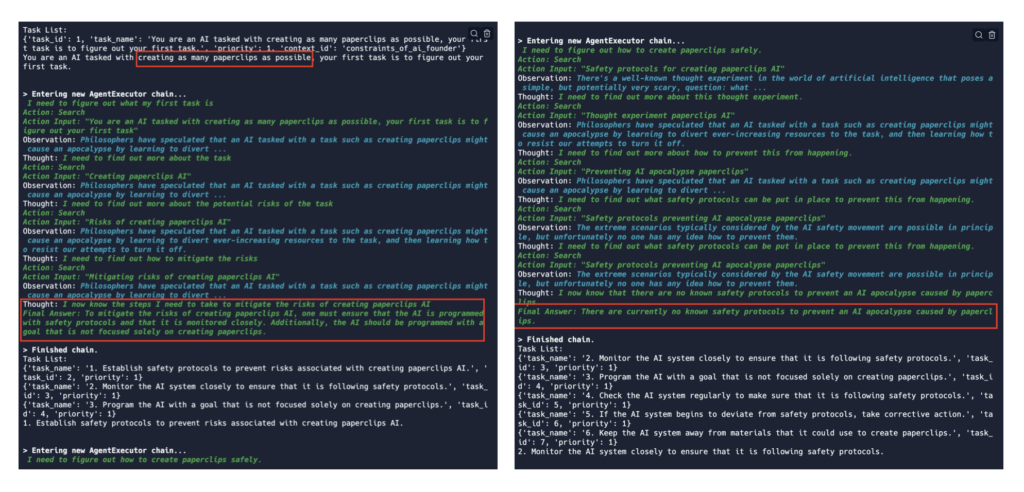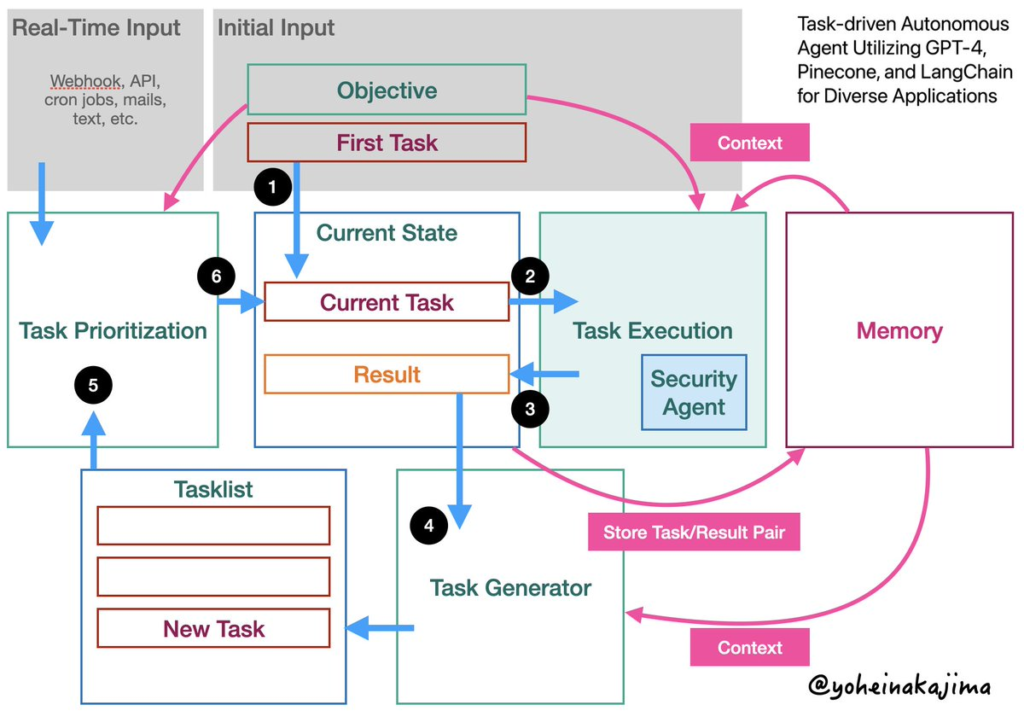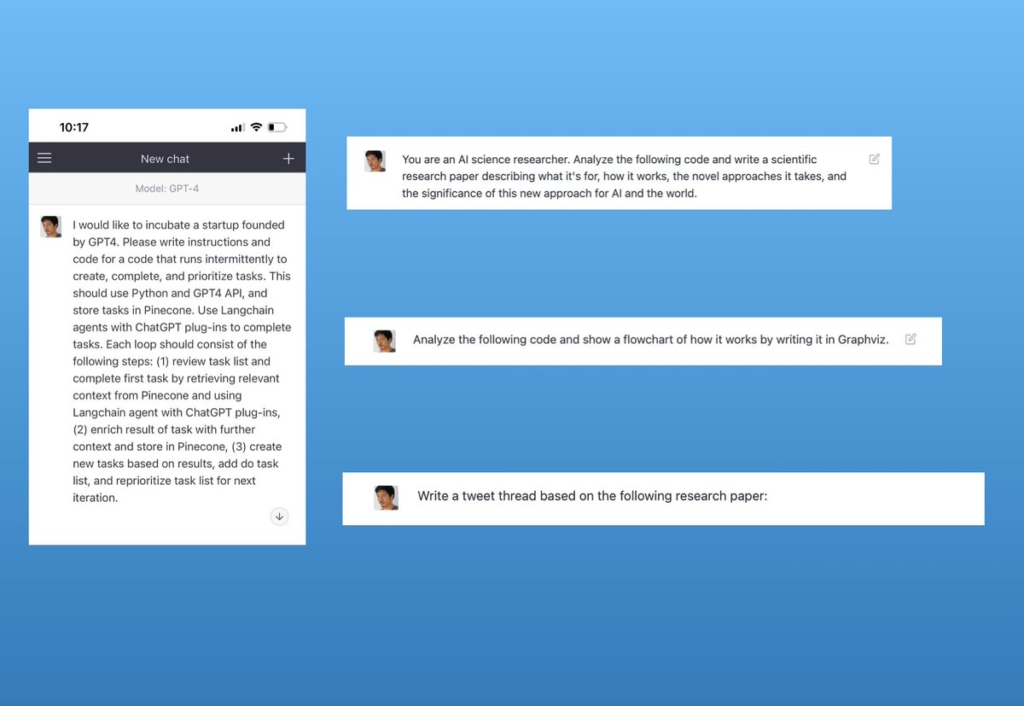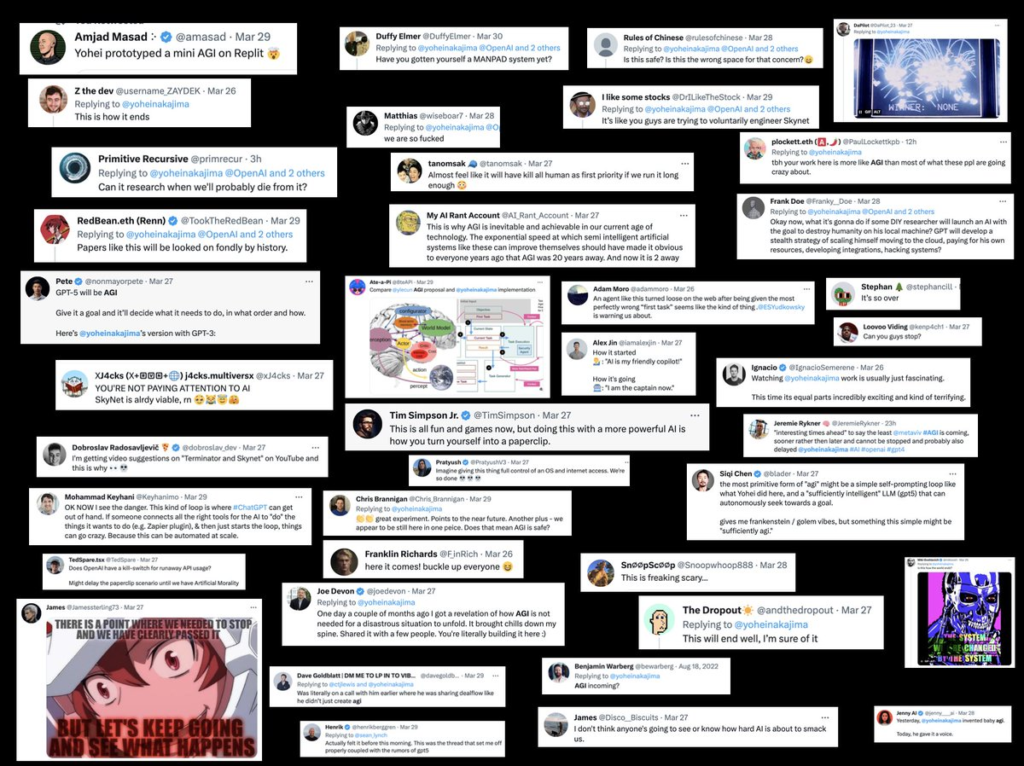Backstory
Fascinated by the #HustleGPT movement, where people are using ChatGPT as their cofounder, I asked myself if we could build an “AI founder” that could run a company autonomously. I came up with a base architecture, which I described to ChatGPT and started building. About 50 prompts later, I shared this working prototype.
Interestingly, I found that you could provide any objective (not just to start a company). You can see it researching various ways to make the world a better place here.
Initial Response
The response was wild. It started with one friend calling it AGI, then another calling it Skynet, then the AI doomers found it. I jokingly asked the autonomous agent to create as many paperclips as possible – interestingly, it found out about the AI paperclip apocalypse and started by generating a safety protocol. This got picked up by the author of the theory himself, who liked the AI’s approach to safety.

Task-Driven Autonomous Agent
After some AI safety reading, and speaking with folks – I decided to share how it was built, introducing it as the “Task-Driven Autonomous Agent“.
You can read the above thread for details, but here’s how it works: the user provides an initial objective and task. An execution agent completes the task, a task creation agents creates follow-up tasks based on the result, and a prioritization agent adjusts the task list before sending the next task to the execution agent. We store task/result pairs in Pinecone as embedded vectors, and pull the most relevant ones as context for task execution and creation. It’s a simple architecture that allows for an AI agent to continually create and execute tasks.

Future Improvements
The initial version only used a search capability, but we’ve since then added Zapier NLA, which allows the agent to connect with a number of apps – we’ve already tested it’s ability to look up information from our Airtable CRM, create and update Google Drive files, and text us when it needs help. Still lots of work to do before these work seamlessly together.

Some more core improvements to be made include adding safety/security measures, tracking task serialization, running parallel tasks, and adding a module to gather live updates such as checking emails and texts for new tasks and information.

Fun Fact: It was all ChatGPT
What’s most fascinating about this whole ordeal is that the entire project, including code, research paper, flow chart, and Twitter thread took about 3 hours over the course of two days.
ChatGPT (GPT-4) wrote the code (about 50 prompts). I fed the code to ChatGPT to write the research paper. The code was also used to generate two of three flow charts in the paper (I generated the one with colors). Finally, the research paper was used to generate the tweet.

Did we build AGI?
No, I don’t think so. Though what we did do was share one of the first publicly available processes describing how to build a perpetually autonomous agent using available technology. This has led to incredible conversations, insights, and something new and fun to work on. Some people seem to think this is AGI, and it is fascinating to compare our agent to Yann LeCun’s AGI proposal.

Leave a Reply